THINK YOU KNOW ABOUT TIME 4 RECOVERY? THINK AGAIN…
Think You Know About Time 4 Recovery? Think Again…
(Click on the Reference Numbers in Blue for More Info)
What Is The Best Post Workout Drink?
The importance of recovery after exercise is summed up by the old adage: “You can only train as hard as you can rest”. In addition to getting sufficient rest, it is also important that we consume the right nutrients at the right time and in the right amounts after exercise if we are to optimise our gains in fitness and muscle size and strength.
Science tells us that the two nutrients that are most emphasised in the post-exercise period are carbohydrate and protein (1). This is because moderate to high intensity cardiovascular exercise and resistance-based workouts (e.g., three to four sets using ~ 6–20 repetition maximum loads) rely extensively on carbohydrate as a fuel source (1). Therefore, the body’s Glycogen stores are extremely important but also limited. For example, performing just six sets of 12 repetitions of the leg extension exercise has been shown to reduce glycogen stores in the Vastus Lateralis by 39% (1). As glycogen levels decline, our ability to maintain exercise intensity and work output decrease while rates of tissue breakdown increase (1).
In light of this, the need to optimise our glycogen stores becomes clear. This is best achieved by consuming carbohydrate in the first 30 minutes after exercise and again every two hours for the next four to six hours (1). Combining a high-quality protein with carbohydrate can further enhance our ability to replenish our glycogen stores. It can also stimulate significant increases in Muscle Protein Synthesis and help to minimise muscle damage, promote a favourable hormone balance and accelerate recovery from intense exercise (1).
While the importance of ingesting key nutrients in the period immediately after exercise is evident, our appetite can be suppressed after training, particularly high intensity training, making it difficult to consume the recommended nutrients within the specified time period.
This is where Time 4 Recovery can play a valuable role in your nutrition plan. Its key ingredients have been shown scientifically to benefit exercise performance and recovery in a number of ways. These include, but are not limited to:
- Increasing muscle Protein Synthesis, resulting in greater muscle hypertrophy (1,2,10,12,15,26,27,28,29,38,39)
- Increasing muscular strength (2,15,17,23,29,39)
- Improving Anaerobic Power (3)
- Improving endurance performance (4,5,7,8,13,20,21,24,25)
- Enhancing post-exercise recovery (1,5,22,23,36,37,38,41)
- Reducing exercise induced fatigue (31,32,33)
- Decreasing muscle soreness after resistance training (17,35,36)
- Replenishing Glycogen stores (1,6,11,13,14,19)
- Reducing feelings of perceived effort during exercise(9,30)
- Decreasing post-exercise tissue damage (22,34,35,37,38,42,43,44,45)
- Restoring immune function and reducing the Immunosuppressive effects of heavy-load training (18,40,41)
- Increasing Testosteroneand IGF-1 levels (15)
- Increasing Growth Hormone levels (15,16)
- Decreasing Cortisol levels (15)
What’s in Time 4 Recovery?

Time 4 Recovery contains a specially formulated combination of substances designed to be consumed after exercise to allow you to recover more quickly and fully, and so maximise your training gains. These include highly branched cyclic dextrin, maltodextrin, glucose, low temperature undenatured whey protein concentrate, low temperature undenatured whey protein isolate, hydrolysed whey protein, whey peptides, branched chain amino acids, glutamine, taurine, glutathione, vitamin C and vitamin E.
As we look at each of these ingredients in-depth, you’ll begin to see why Time 4 Recovery is such a great product and how it may benefit you.
Time 4 Recovery Carbohydrate Blend (Maltodextrin, Highly Branched Cyclic Dextrin, Glucose)
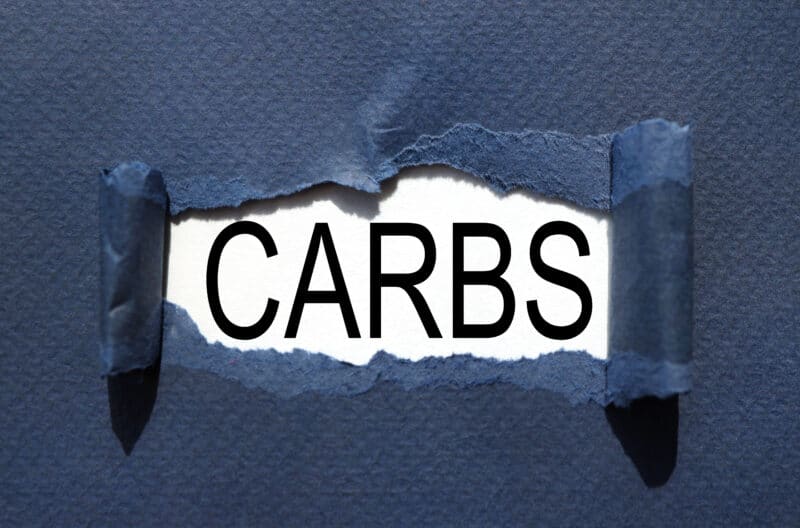
While some people are concerned that carbohydrates may cause weight gain, the science and experience tell us that the consumption of the right type of carbohydrate at the right time is essential for high intensity exercise performance, recovery and optimal muscle growth and strength (1). Consequently, we have added a blend of fast and slower acting carbohydrates including maltodextrin, branched cyclic dextrin and glucose to quickly normalise post exercise blood glucose levels and replenish your glycogen stores, which are essential for initiating and sustaining the recovery process. It is only during the immediate post-exercise phase of recovery, as your body aims to prioritise the normalisation of blood glucose levels, that we would recommend the consumption of simple and fast acting sugars.
What Is Maltodextrin?
Maltodextrin is an easy-to-digest complex carbohydrate made from corn, potato or rice starch, which is absorbed as quickly as glucose and provides a rapid supply of energy during the important post- exercise refuelling period. It is often contained in sports drinks to allow athletes to refuel and rehydrate simultaneously during and after exercise.
How Will Maltodextrin Benefit Me?
A study by Maunders et al., (5) investigated the effects of postexercise
Maltodextrin and fructose ingestion on subsequent exercise capacity. Eight trained endurance runners and triathletes performed two experimental trials involving treadmill running to exhaustion at 70% V˙O2max, a 4-h recovery with 90 g·h of fructose-maltodextrin (FRU + MAL) ingestion (1:1.5 ratio), and a second bout of treadmill running to exhaustion at 70% V˙O2max. The results of the study showed that short-term recovery of endurance capacity was significantly enhanced with FRU + MAL.
What is Highly Branched Cyclic Dextrin?
Highly branched cyclic dextrin is an advanced form of carbohydrate which is made when sugar molecule clusters are formed using a special branching enzyme, which increases digestibility. This advanced form of carbohydrate differs from other high GI carbohydrates such as maltodextrin, as it provides a sustained release of energy, rather than a sudden rise in blood sugar and its accompanying large insulin response, ensuring that your body receives a steady supply of carbohydrate.
How will Highly Branched Cyclic Dextrin Benefit Me?
Numerous studies have demonstrated the beneficial effects of highly branched cyclic dextrin (HBCD) on exercise performance (7,8,9). For example, Shiraki et al., (7) investigated the effects of HBCD administration on endurance performance. Seven elite swimmers participated in three trials, conducted in random order. In each trial, the subjects received either HBCD, glucose or water (as a control), and immediately carried out 10 cycles of intermittent swimming consisting of 5 min of swimming at 75% VO2max followed by 3 min of rest, and subsequent swimming at 90% VO2max to exhaustion. The time to fatigue was about 70% longer in the HBCD trial than that in the glucose and control trials.
What is Glucose?
Glucose is the simple sugar which provides the body with its primary source of energy and is a component of many carbohydrates. It is rapidly absorbed and enters the blood stream easily to be transported around the body where it can help to replenish depleted glycogen stores.
How will Glucose Benefit Me?
A study by Conlee and colleagues (46) compared the effectiveness of glucose and fructose feeding on restoring glycogen content after glycogen was depleted by exercise (90-min swim) or fasting (24 h). After 2 h of recovery from either exercise or fasting there was no measurable glycogen repletion in red vastus lateralis muscle in response to fructose. In contrast, glucose feeding induced a similar and significant carbohydrate storage after both depletion treatments (8.44 mumol X g-1 X 2 h-1).
What is Whey Protein?
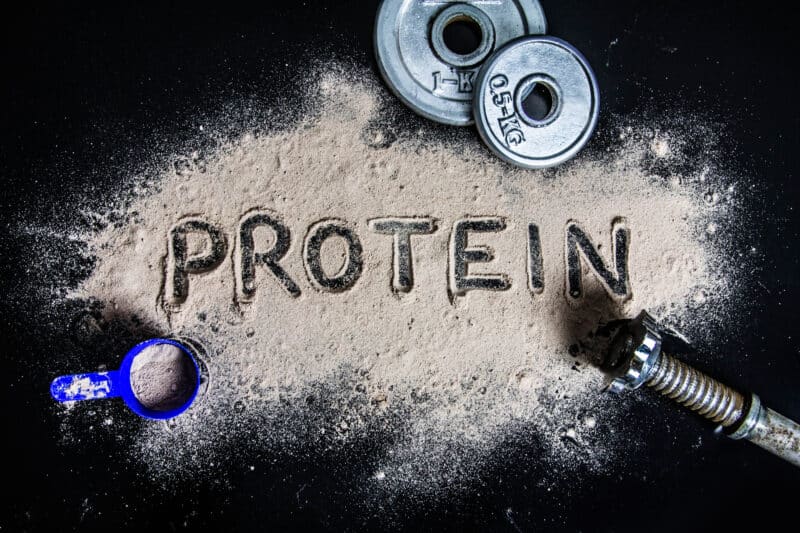
Whey protein is the protein fraction of whey, the liquid portion of milk that separates from the curds during the cheese making process. It comprises 20% of total milk protein and is rich in branch chain amino acids and essential amino acids, functional peptides, antioxidants and immunoglobulins (48).
How will Whey Protein Benefit Me?
Whey protein is a complete, high-quality, easily digested protein which has been shown scientifically to provide numerous potential benefits for health and performance. These include increasing muscle mass (1,49, 55,), reducing body fat (49, 50, 51), helping to maintain muscle mass during weight loss (51), suppressing appetite to aid fat loss, increasing metabolism (50), improving immune function, reducing blood pressure (52), reducing unhealthy blood fats (53), improving blood glucose levels in type 2 diabetics, and increasing the production of glutathione, the body’s master antioxidant (54). It also confers benefits against a wide range of metabolic diseases such as cardiovascular complications, high blood pressure, obesity, diabetes, cancer and phenylketonuria (48).
How Does Whey Protein Compare to Other Proteins?
Having reviewed the data supporting the role for whey protein consumption in the regulation of muscle mass and body composition, Devries and Philips (56) concluded that whey protein is one of the highest-quality proteins, given its amino acid content (high essential amino acids, branch chain amino acids, and leucine amino acid content) and rapid digestibility. They further suggest that whey protein has the ability to stimulate muscle protein synthesis to a greater degree than other proteins.
Are All Whey Proteins the Same?
There are various types of whey protein, which differ slightly in the processing they have undergone, their composition and the benefits they provide.
Time 4 Recovery provides a blend of low temperature undenatured whey protein concentrate, whey protein isolate, hydrolysed whey protein and whey peptides.
Low temperature undenatured whey protein concentrate is a form of whey protein typically low in fat and cholesterol, containing bioactive compounds as well as growth factors and small amounts of carbohydrates in the form of lactose, and is quickly absorbed by the body. It is also rich in both branch chain amino acids (BCAAs) and glutamine. We’ll look at BCAAs and glutamine in some detail a little later.
The term ‘undenatured’ means that the whey is cold processed, rather than being heated to high temperature, allowing it to maintain all of its amino acids, the bioactive compounds and growth factors contained within whey protein concentrate provide significant health benefits but must remain in their undenatured form in order to exert these properties.
Low temperature undenatured whey protein isolate is a form of whey protein, which has undergone greater processing than whey concentrate. This results in a reduction in some bioactive compounds and growth factors, but provides a slightly greater protein content and lower levels of carbohydrates, lactose and fat than whey concentrate. It is also more quickly absorbed by the body than whey protein concentrate.
Hydrolysed whey protein is an ultrapure form of whey protein that comprises smaller protein particles known as peptides. These are easily absorbed in the body providing faster rate of digestion and absorption.
Whey Peptides
Peptides are short chains of amino acids linked by peptide bonds that are easily absorbed in the body providing faster rate of digestion and absorption.
Why Use This Blend of Whey Proteins?
The combination of different forms of whey protein in Time 4 Recovery provides you with a quick and easily digested supply of muscle building Amino Acids into the blood stream, which not only helps to ensure optimum muscle growth and recovery, but also optimum replenishment of glycogen stores. We would only recommend using the fast-acting isolate and hydrolysate whey proteins with carbohydrate post-exercise, when it is important to get amino acids and carbohydrate into the muscles as quickly as possible to optimise recovery.
At any other time of the day, we would recommend taking a blended time release protein formula such as our Time 4 Whey Protein
Combining Carbohydrates and Protein: What Does The Science Say?
Perhaps there is a tendency to think of protein building muscle and carbohydrates supplying energy to train, but protein can provide us with energy during exercise and carbohydrate plays an important role in building muscle. For example, Stark et al., (2) conducted a review of the literature on protein timing and its effects on muscular hypertrophy and strength in individuals engaged in weight-training. They concluded that combination of a fast-acting carbohydrate source such as maltodextrin should be consumed with the protein, as leucine, the amino acid which drives muscle growth, cannot modulate protein synthesis as effectively without the presence of the highly anabolic hormone insulin to transport it into the muscle cells.
A study by Ivey et al., demonstrated that a combined protein and carbohydrate supplement is also more effective for the rapid replenishment of muscle glycogen after exercise than carbohydrate alone (57). Evidence such as this has led the International Institute of Sports Nutritionists to recommend combining protein with carbohydrate when trying to rapidly restore glycogen levels, as well as promoting muscle protein synthesis (1).
Post exercise, cells are very sensitive to the anabolic actions of the hormone insulin. Therefore, by consuming carbohydrates that promote the greatest insulin spike with a protein source, we can produce the highest rates of amino acid uptake and also promote the greatest glycogen storage.
Is It Only Strength Training Athletes Who Can Benefit From A Carbohydrate and Protein Recovery Supplement?

Williams and colleagues (13) assessed the restorative capacities of a high carbohydrate-protein (CHO-PRO) beverage containing electrolytes and a traditional 6% carbohydrate-electrolyte sports beverage (SB) after glycogen-depleting endurance exercise. Post exercise ingestion of the CHO-PRO beverage, in comparison with the SB, resulted in a 55% greater time to exhaustion during a subsequent exercise bout at 85% maximum oxygen consumption (VO2max). The greater recovery after the intake of the CHO-PRO beverage could be because of a greater rate of muscle glycogen storage. Therefore, a second study was designed to investigate the effects of after exercise CHO-PRO and SB supplements on muscle glycogen restoration. Eight endurance-trained cyclists performed 2 trials consisting of a 2-hour glycogen-depletion ride at 65-75% VO2max. Carbohydrate-protein drink or SB was provided immediately and 2 hours after exercise. Ingestion of the CHO-PRO beverage resulted in a 17% greater plasma glucose response, a 92% greater insulin response, and a 128% greater storage of muscle glycogen for CHO-PRO and SB, respectively) compared with the SB (p < 0.05).
What Are Branch Chain Amino Acids (BCAAs)?
Amino acids are the ‘building blocks’ which combine to form the various proteins needed by the body for many important functions, including tissue growth and repair, and energy production. There are 20 amino acids that make up the estimated 2 million different types of proteins. Of these 20, 9 are referred to as ‘essential amino acids’ because they cannot be produced by the body and so must be obtained from dietary sources.
Branch chain amino acids (BCAAs) are a group of three essential amino acids comprising of leucine, isoleucine and valine, which make up approximately one-third of skeletal muscle protein and account for 40% of the total amino acids required by the body. They are grouped together because they all have a branched molecular structure and perform many similar functions.
Leucine is important for Protein Synthesis and many other functions including the regulation of blood-sugar levels, growth and repair of muscle and bone tissue, Growth Hormone production, and wound healing. It also prevents the breakdown of muscle proteins after trauma or severe stress. It is leucine which provides the signal to switch from a Anabolic State in which it begins to rebuild. The quicker your body receives this signal after training, the sooner it switches from breaking muscle down to building and repairing it to ensure a full and speedy recovery.
Isoleucine is concentrated in muscle tissues in humans and has a range of functions including regulating blood sugar and energy levels, assisting wound healing, stimulating immune function, promoting the secretion of several hormones, and Haemoglobin production. It may also help to prevent the breakdown of muscle during exercise, and so enhance recovery.
Valine plays a role in muscle growth, tissue repair, and energy production. It also maintains mental vigour, muscle coordination, and emotional calm.
How Will Branch Chain Aminos (BCAAs) Benefit Me?

The use of Branch Chain Aminos (BCAAs) supplementation is supported by numerous scientific studies which demonstrate the wide variety of performance benefits it can provide. These include, but are not limited to:
- Increasing muscle mass (26,27,28,29,38)
- Increasing muscular strength (29)
- Reducing exercise induced fatigue (31,30,33)
- Reducing post-exercise soreness (34,35,37,15)
- Enhancing recovery after strength training (36,14,15)
- Helping to prevent weight gain and aid fat loss (29,58 ,59 ,60)
Here are just a few examples of the many studies which demonstrate the effectiveness of Branch Chain Amino Acid (BCAA) supplementation:
Bloomstead et al., (27) investigated the role of branch chain amino acids in protein synthesis after physical exercise. The authors noted that BCAAs, particularly leucine, have anabolic effects on protein metabolism by increasing the rate of protein synthesis and decreasing the rate of protein degradation in resting human muscle. Also, during recovery from endurance exercise, BCAAs were found to have anabolic effects in human muscle. They concluded that these effects are mediated through changes in signaling pathways controlling protein synthesis. This involves phosphorylation of the mammalian target of rapamycin (mTOR) and sequential activation of 70-kD S6 protein kinase (p70 S6 kinase) and the eukaryotic initiation factor 4E-binding protein 1.
Stoppani and colleagues (29) evaluated the efficacy of consuming a supplement containing branch chain amino acids (BCAAs) during an eight-week resistance-training program. The results showed that ingestion of a supplement containing BCAAs resulted in a greater decrease in percent body fat, an increase in lean mass, and 10-RM strength gains on the bench press and squat vs. ingestion of a whey protein supplement or a sports drink. In addition, the ingestion of a whey protein supplement resulted in greater lean mass gains than ingestion of a sports drink.
Shimomura et al., (35) examined the effect of branch chain amino acid (BCAA) supplementation on squat-exercise-induced delayed-onset muscle soreness (DOMS) using 12 young, healthy, untrained female participants. Participants ingested either BCAAs or dextrin before the squat exercise, which consisted of 7 sets of 20 squats/set with 3-min intervals between sets. DOMS showed a peak on Days 2 and 3 in both trials, but the level of soreness was significantly lower in the BCAA trial than in the placebo. These results suggest that muscle damage may be suppressed by BCAA supplementation.
What Is Glutamine?
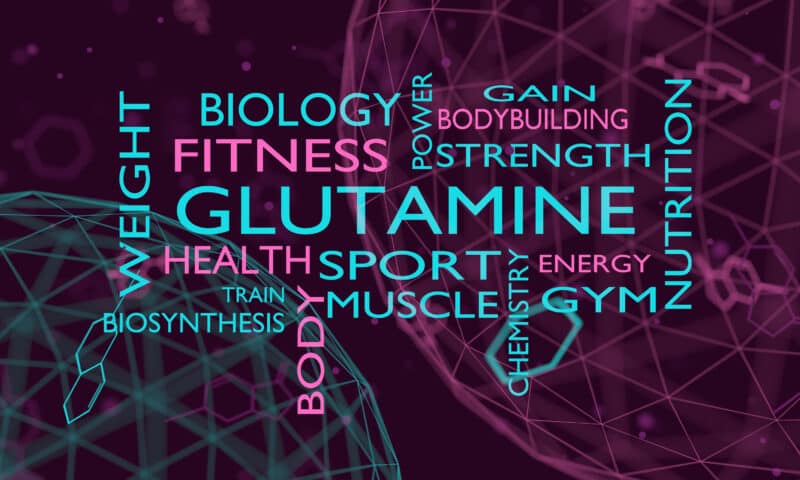
Glutamine is the most abundant amino acid in the human body. It makes up approximately 60 percent of our skeletal muscle and plays an important role in protein synthesis, the function of the immune system, and gut health. Muscle tissue is a major site of glutamine production, where it forms the anabolic precursor for muscle growth. However, it is a ‘conditionally essential amino acid’. This means that although the body can synthesise it from other amino acids, under certain circumstances, such as illness, surgery and periods of intense training, the glutamine needs of our body may exceed its ability to produce it and so it must be obtained from dietary sources.
How Will Glutamine Benefit Me?
Glutamine has been shown scientifically to provide a wide variety of performance and health benefits. These include, but are not limited to:
- Increasing muscle mass (15,)
- Increasing strength and power (15)
- Reducing body fat (15,)
- Increasing Testosterone and IGF-1 levels (15)
- Increasing Growth Hormone levels (15,16)
- Decreasing Cortisol levels (15)
- Enhancing recovery and decreasing muscle soreness after resistance training (17)
- Restoring immune function and reducing the Immunosuppressive effects of heavy-load training (18)
- Enhancing carbohydrate storage during recovery from exhaustive exercise (19)
- Helping to maintain a healthy gut (61)
- Enhancing brain health (62)
Here are just a few examples of the many scientific studies that demonstrate the benefits of glutamine supplementation.
Legault and colleagues (17) examined the effects that glutamine supplementation has on quadriceps muscle strength and soreness ratings following eccentric exercise. Supplement conditions consisted of isoenergetic placebo and glutamine (0.3 g·kg-1·day-1 + 0.3 g·kg-1·day-1 maltodextrin) ingestion once per day over 72 hr. Knee extensor peak torque and muscle soreness were measured before, immediately following, 24, 48, and 72 hr post-eccentric exercise. Eccentric exercise consisted of 8 sets (10 repetitions/set) of unilateral knee extension at 125% maximum concentric force with 2-min rest intervals. glutamine resulted in greater relative peak torque both immediately after and 72 hr postexercise and in lower soreness ratings at 24, 48 and 72 hr.
A study by Botwell and colleagues (19) assessed the efficacy of glutamine in promoting whole body carbohydrate storage and muscle glycogen resynthesis during recovery from exhaustive exercise. Postabsorptive subjects completed a glycogen-depleting exercise protocol, then consumed 330ml of one of three drinks, glucose polymer solution, 8g glutamine in 330ml glucose polymer solution, or 8g glutamine in 330ml placebo, and also received a primed constant infusion of [1-13C] glucose for 2h. Plasma glutamine concentration was increased after consumption of the glutamine drinks. In the second hour of recovery, whole body nonoxidative glucose disposal was increased by 25% after consumption of glutamine in addition to the glucose polymer. Oral glutamine alone promoted storage of muscle glycogen to an extent similar to oral glucose polymer.
Hakimi et al., (15) investigated the effects of glutamine supplementation on performance and hormonal responses in non-athlete male students during eight week resistance training. Subjects consumed either glutamine (GL) supplementation or a placebo (PL) .
The training consisted of 3 sets of 8 repetitions, and the initial weight was 80% of the pre-1RM. Both groups increased their performance, but the GL group showed significantly greater increases in upper and lower body strength, explosive muscular power, blood testosterone, GH and IGF-1 when compared to the PL group. Cortisol concentrations were significantly more reduced in GL group when compared to the PL group. The authors concluded that 8 weeks of glutamine supplementation during resistance training was found to increase performance (explosive muscular power, muscle strength) and improved body composition (increased body mass, fat-free mass and reduced body fat).
What Is Taurine?
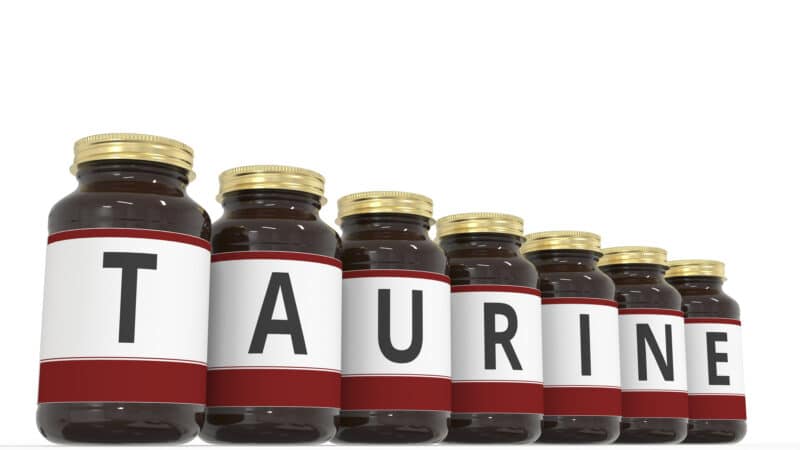
Taurine is an amino sulfonic acid, but it is often referred to as an amino acid. It occurs in large amounts in the brain, retina, heart, and platelets. Like glutamine, it is considered to be a conditionally essential amino acid. It performs various functions in the body including maintaining proper hydration and electrolyte balance in cells; forming bile salts, which play an important role in digestion; regulating minerals such as calcium within cells; supporting the general function of the central nervous system and eyes; and regulating immune system health and antioxidant function.
How Will Taurine Benefit Me?
Numerous studies have shown that supplementation with taurine provides a number of performance related benefits including increases in strength (22,23), fat oxidation during exercise, VO2max, exercise time to exhaustion and maximal workload (21), and a reduction in exercise induced muscle damage and oxidative stress (21,22).
A review by Takahashi and Hatta (63) specifically addressed the effects of taurine administration on exercise-induced fatigue and post-exercise recovery. The results showed that post-exercise taurine administration enhanced the recovery of skeletal muscle glycogen, which is the major determinant for exercise performance. The authors also noted that taurine has been suggested to have positive effects on some of the physiologic functions considered to be a cause of fatigue during exercise: Ca2+ handling in excitation–contraction coupling, regulation of ion channels, oxidative stress, and the inflammatory response. However, how taurine affects these processes is not fully understood.
What Is Glutathione?
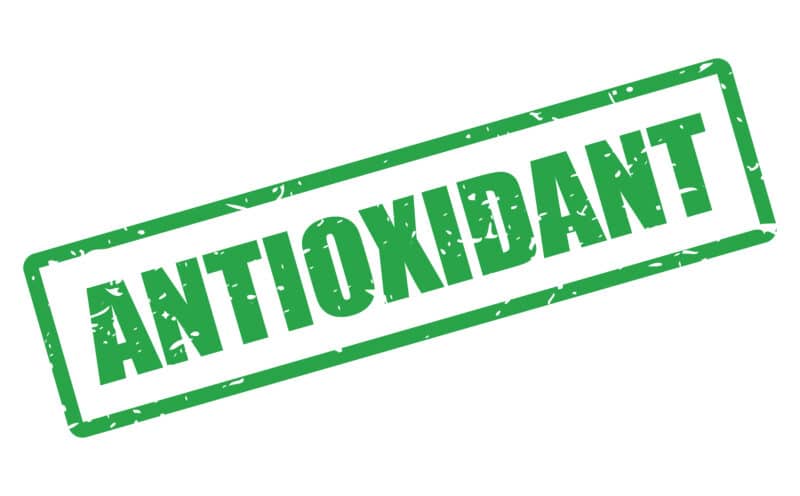
Glutathione is a powerful antioxidant found in every cell in the body. It is made of three types of amino acid, and provides numerous functions essential for good health and function. These include making DNA, supporting immune function, aiding energy production, decreasing inflammation, re-modelling muscle cells, and preventing damage to important cellular components caused by free radicals.
How Will Glutathione Benefit Me?
In addition to its essential role in good health, a number of studies have shown how glutathione supplementation can also benefit athletic performance (39,40, 47).
For example, a study by Hwang and colleagues (39) investigated the effects of a resistance training programme in conjunction with glutathione, L-citrulline, L-citrulline-malate, or placebo supplementation on lean mass and its association with muscle strength. The secondary purpose was to assess the safety of such supplementation protocol by assessing clinical chemistry markers. The results of the study showed that eight weeks of resistance training in conjunction with glutathione and L-Citrulline supplementation increased lean mass and had no adverse effects on blood clinical safety markers in resistance-trained males.
Aoi et al., (47) investigated the effect of glutathione intake on exercise-induced muscle metabolism and fatigue in mice and humans. In the mouse experiment, post-exercise plasma non-esterified fatty acids were significantly lower in the exercise supplemented with glutathione group compared with the exercise control group. Intermuscular pH decreased with exercise. However, this reduction was prevented by glutathione supplementation. In the human study, the elevation of blood lactate was suppressed by glutathione intake. Fatigue-related psychological factors were significantly decreased in the glutathione trial compared with the placebo trial. These results suggest that glutathione supplementation improved lipid metabolism and acidification in skeletal muscles during exercise, leading to less muscle fatigue.
What Is Vitamin E?

Vitamin E is a fat-soluble vitamin. It is found in many foods including vegetable oils, cereals, meat, poultry, eggs, fruits, nuts, vegetables, and wheat germ oil. It acts as an antioxidant, helping protect the body from free radical damage, and also supports the immune system, helps to make red blood cells and plays a role in attenuating post-exercise muscle damage.
How Will Vitamin E Benefit Me?
Vitamin E has been shown to provide a number of benefits for physical performance including reducing exercise induced tissue damage and inflammatory response (42, 43,) enhancing post-exercise tissue repair (45) and preventing exercise induced DNA damage (44).
For example, a study by Meydani et al., (43) investigated the protective effect of vitamin E supplementation on exercise-induced oxidative damage. Subjects received either vitamin E or a placebo daily. After 48 days, subjects performed a bout of eccentric exercise at 75% of their maximum heart rate by running down an inclined treadmill for 45 min. The results of the study showed that vitamin E provides protection against exercise-induced oxidative injury.
What Is Vitamin C?
Vitamin C is a water-soluble vitamin commonly found in a variety of fruit and vegetables. It is an antioxidant and helps to maintain the health the of skin, cartilage, teeth, bone, and blood vessels.
How Will Vitamin C Benefit Me?
Vitamin C has been shown to provide a number of benefits for performance including promoting recovery (41), and reducing exercise induced muscle damage and inflammation (42).
Combining Vitamin C and E: What Does The Science Say?
A number of studies have demonstrated the benefits of combining vitamin C and E. For example, Chou et al., (42) investigated the effects of short-term high-dose vitamin C and E supplementation on muscle damage, hemolysis, and inflammatory responses to simulated competitive Olympic Taekwondo (TKD) matches in elite athletes. The results of the study showed that short-term (4-days) vitamin C and E supplementation effectively attenuated exercise-induced tissue damage and inflammatory response during and after successive TKD matches.
What Is The Best Post Workout Drink: To Sum Up….
Optimum performance and optimum gains require optimum recovery, which necessitates the consumption of the right nutrients at the right time. This can be difficult to achieve when juggling the demands of work, training and home life. As we have seen, Time 4 Recovery provides you with a specially formulated combination of substances which have been shown scientifically to aid recovery. This easy to consume and digest formula is specifically designed for use immediately post workout, when glycogen storage, amino acid uptake and protein synthesis are best optimised. It is not filling, so you will still be able to consume your next meal comfortably, and it comes in two great tasting flavours